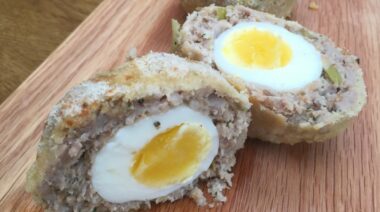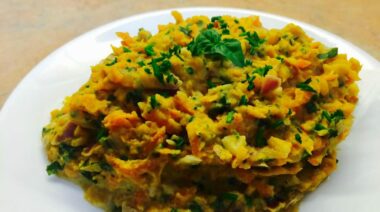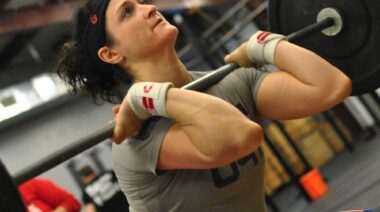With the summer comes hot weather and the reminder that we need to take sufficient water and energy drinks for any long rides or extended bouts of exercise. Pre-packaged drinks and gels have many convenience features, but it is quite easy and less expensive to make your own.
All the ingredients for my favorite homemade sports drink.
Training and Water Loss
The first and most important ingredient to take with you is water. This critically affects blood plasma volume, which is important for working muscles. Just a 2% loss in weight of water (about 1.4 liters) can cause performance degradations up to as much as 10-20%.
“Another benefit of making your own is that you can tailor to your taste preferences and any dietary needs or precautions you need to take.”
Dehydration also increases your heart rate as you try to pump thicker blood around the body. Further losses cause nausea and at 5% water loss your performance will degrade by a massive 30%. At 8% water loss, you will be in trouble with dizziness and difficult breathing.
Everyone loses water at different rates, but a general rule is that we lose about a liter for every hour of hard exercise, depending upon conditions. You could obtain a more accurate measurement of your water loss by weighing yourself before and after each session. Every hundred grams difference will match one tenth of a liter.
Carbohydrates
The next important ingredient in our drink is carbohydrates. You will need to add sugar to your water if you are undertaking an activity longer than an hour. This will supply energy and help replenish your own body reserves of glucose (glycogen).
“[F]or all the marketing messages about the ‘right’ ingredients, there is actually quite a variation.”
Your body can absorb approximately sixty grams of carbohydrates per hour, which equates to 240 calories. Working on the liter per hour principle, that means you should be taking in about sixty grams of easily digested carbohydrates per liter of water per hour.
Carbohydrates can come from a variety of sources:
- Simple sugars like glucose that can be used directly
- Fructose from fruit that requires more processing in the body before it can be used
- More complex sugars and starches
Here are the contents of some commercially available energy mixes and gels:
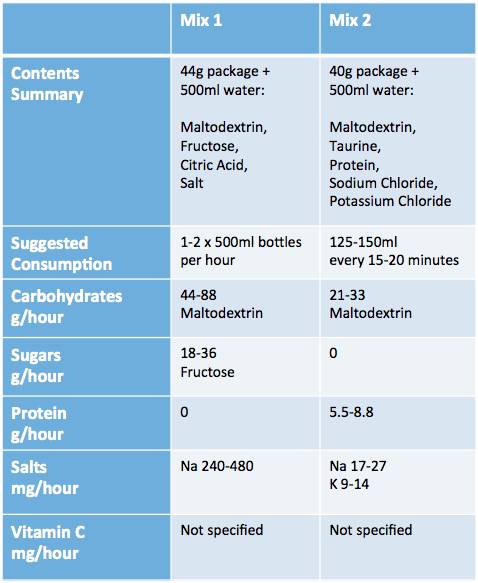
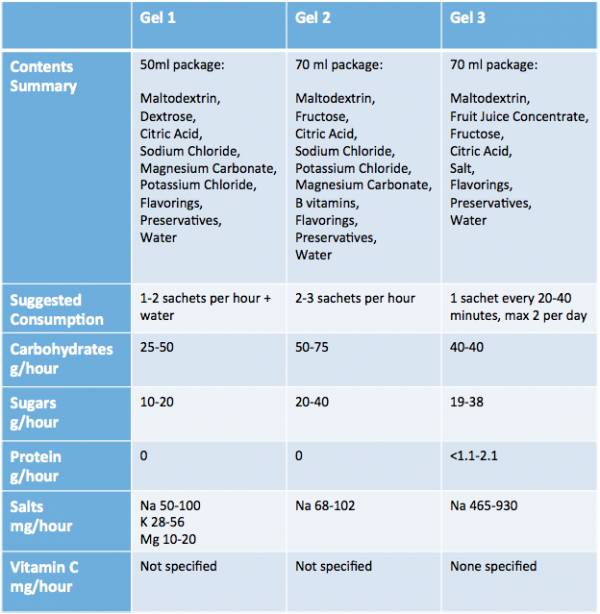
As you can see, for all the marketing messages about the “right” ingredients, there is actually quite a variation. A home mix might not be so sub-optimal after all! Another benefit of making your own is that you can tailor to your taste preferences and any dietary needs or precautions you need to take. You will also have a better idea of what your drink contains.
Additional Ingredients
Two other ingredients I like to add into a home-brew energy drink are vitamin C and salt:
- Vitamin C is an important essential vitamin. “Essential” means the body cannot store it or make it. You need to consume it every day. Antioxidants are also important micronutrients that assist your immune system, which can become degraded with large amounts of exercise.
- Salt is optional. Most of us have quite enough salt in our everyday diets and are unlikely to use up our reserves. However, if conditions are very warm or you are taking part in a long event, a small quantity of salt may help. As the maximum suggested intake is approximately six grams per day, you will a fraction of a gram per liter in your drink.
Basic Formula
The basic formula for your own energy drink would be 60 grams of sugars or carbohydrates from fruit, dried sugars, or syrups dissolved in one liter of water. Some of the sugars could come directly from glucose powder. Fresh orange juice allows a different sugar, fructose, to be added along with some vitamin C and additional minerals.
“If you have any tendency towards diabetes, then consult your doctor before taking any sports drink.”
Personally, I find orange juice rather sweet so I usually add some malt extract to make up some of the sugars. This adds some more complex carbohydrates and helps reduce the sweetness of the drink with its slightly savory taste. The extract also adds a small quantity of minerals and protein.
Note that malt extract is not the same as the maltodextrin listed in the commercial products. Maltose (from malt extract) and glucose products have the highest glycaemic index. This is a measure of how quickly they enter the bloodstream. If you have any tendency towards diabetes, then consult your doctor before taking any sports drink. I have also found some malt extracts contain salt already, so I would check all your ingredients before adding any additional salt.
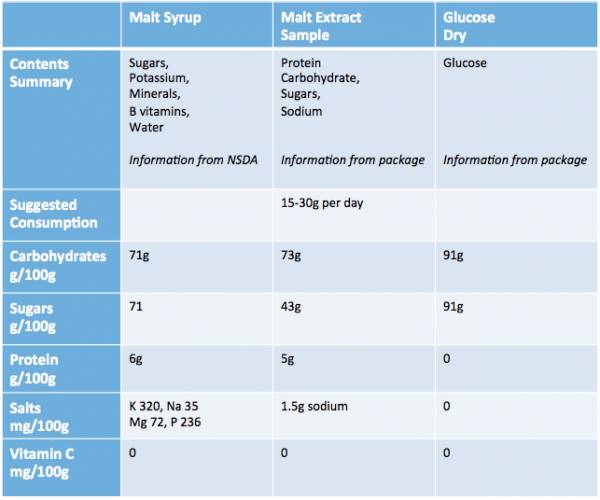
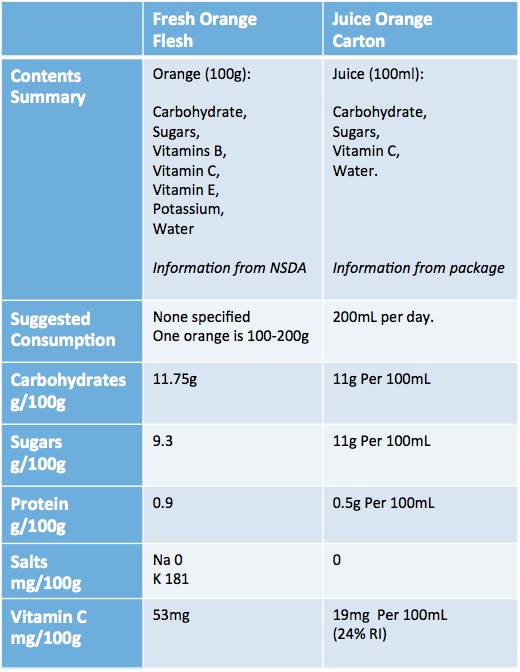
On top of this basic formula, you could also include other fruit juices like melon or blackberry. If you have a juicer, then you have a wide choice of flavors available to you that could also include vegetables. You could also add in any additional supplements that you like to use.
My Favorite Recipe
- 1 liter of water
- 20g dry glucose
- 200ml fresh orange juice
- 30g malt extract
This is quick to mix and you will likely find that the ingredients cost less than a commercial mix, as well as having better contents.
More Like This:
- Are Fruit Juices as Bad as Soft Drinks?
- Getting Started With Juicing: What You Need to Know
- Cleanses, Detoxes, and Juice Fasts: Do They Work?
- New on Pulse Beat Fit Today
References:
1. United States Department of Agriculture National Nutrient Database (USDA), accessed 12 August 2015.
2. Association of British Cycling Coaches Coaching Manual.


